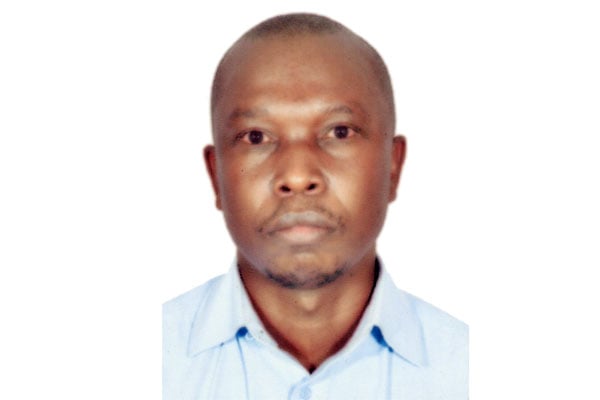Prime
Itsu Iya Masaaba: A Tale of two languages

Geofrey Buyera
What you need to know:
- “There has been limited space for meaningful Lumasaaba language growth”
There is a Lumasaaba Language Board and Lugisu Language Board. The Lumasaaba Language Board is headed by a man and Lugisu Language Board by a woman.
Hon. Musila argues that when the white man conquered Masaabaland, he asymmetrically divided it into two: he introduced Luganda in the north and Swahili in the south. Now the once seemingly one tribe is divided dialectically courtesy of linguistic imperialism.
Bamasaaba folklore talks of Masaaba having had three sons: Mwambu, the first born, whose descendants occupy north Bugisu (Sironko & Bulambuli); Mubuuya, the second born whose descendants occupy the South (Manafwa, Bududa and Western Kenya), and Wanale, whose descendants occupy the central (Mbale City & Mbale District). Mwambu, a herdsman, lost his cattle to the Masai rustlers.
He pursued them back to their homeland, not only retrieved his cattle but also came along with their most treasured bull (igisu). That is how Bamasaaba acquired their second name Bagisu. Among the earliest texts, Rev. J. B. Purvis in 1907 about Lumasaaba refers to “these primitive mountain people” as “the Bagishu, or Bamasaba”. He goes on to describe Lumasaaba thus—“There seems little doubt but that in the country of Masaba, i.e. the land on and near Mount Elgon, we have the most primitive language...” He acknowledged the help “by my Mugishu boy, Andrew Polo ‘’ a descendant of Wanale from Nangwasi, Mbale District “and a Muganda teacher Alexander ‘’.
Therefore, Bagishu or Bamasaba has been used interchangeably even in the precolonial era as noted by historian Were S. Gideon (1982).
Government introduced the thematic curriculum in 2007 where children are taught in their mother tongue throughout P1 to P3. Besides, the 2007 National Language Policy established District Language Boards to promote the use of the local languages in primary schools. Consequently, the Lumasaaba Language Board established in 2013 developed a revised “The Standard Lumasaaba Orthography”. The first was produced by the Lumasaaba Language Academy in 1994.
The Lumasaaba Orthography adopted the central Lugisu dialect, which Floris Burgers in his “Schooling and Social Change among the Bagisu of Uganda’ describes as “is both more sophisticated (does not drop parts of the prefixes) and purer (has incorporated fewer words from Luganda)”. Thus posing a reading problem to our children from the North.
Counsel Masaereje, in one of our interactions, argued that because the books written using the standard orthography were unintelligible by the Bagisu of the North, he was going to appeal to NCDC to create instructional materials for children from the north. As I am writing this the Lugisu orthography is in offing and the Lugisu Language Board is fully constituted.
Prof. Timothy Wangusa in his biographical book acknowledges these learners’ dilemma when he describes how an old woman whom he had respectfully addressed as an old lady repulsively reacted thinking she had been called a witch while still studying at Masaba SS in Sironko.
Ms. Lucy Lunyolo, the Kamalilo Ka Lawino writer, is of the view that it is advantageous to the growth of Lumasaaba if the instructional materials are translated into the various dialects to bridge the gap.
After all, she points out that the Song of Lawino which she translated into Lugisu “has been translated into both Kiswahili and Sheng in Kenya and Pidgin in Nigeria”. Something that I entirely agree with: after all, any living language must evolve over time and adapt to the changing needs of its speakers.
The biggest challenge, however, is there has been limited space for meaningful Lumasaaba language growth and development discussions. For instance, the Lumasaaba Language Academy started off very well but somehow went into a lull.
Mr. Kamuli Emmanuel, my undergraduate lecturer and the compiler of the first Lumasaaba orthography, had inspired me into sociolinguistics but because of lack of funding (I twice enrolled for master in linguistics at Makerere and on both occasions the quorum wouldn’t be realised).
The Lumasaaba Language Board, like the rest of local language boards, suffered the same fate. Since 2013, after producing the standard orthography, the board has never sat to conduct any business nor monitored the progress of the mother tongue language teaching due to lack of funding.
Therefore, instead of creating another orthography the Board should be funded to monitor the teaching and learning of Lumasaaba, and produce accommodative orthographies and instructional materials based on the feedback or findings. Above all, it is high time the Board thought of a Lumasaaba Dictionary!
Geofrey Buyera is an Educationist and M&E Specialist.




